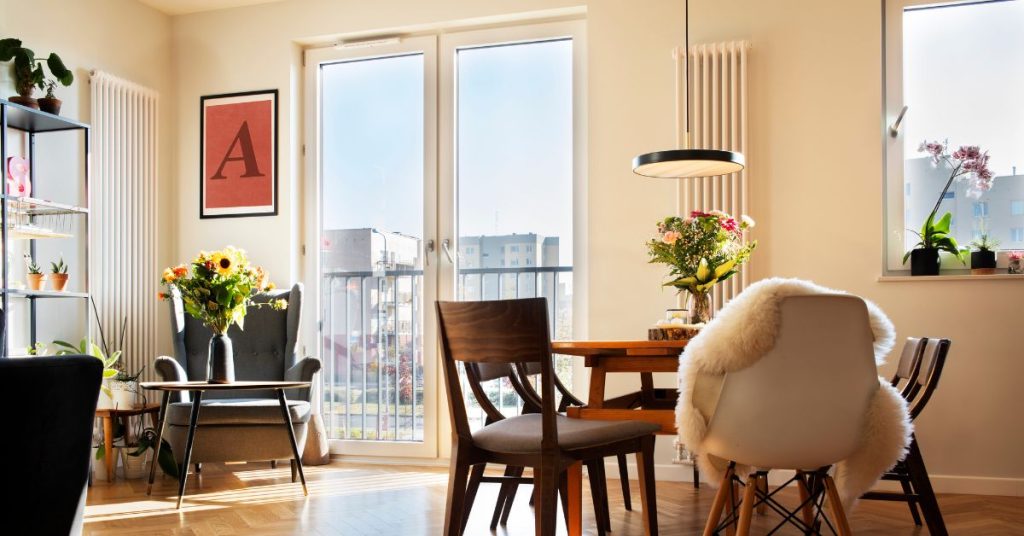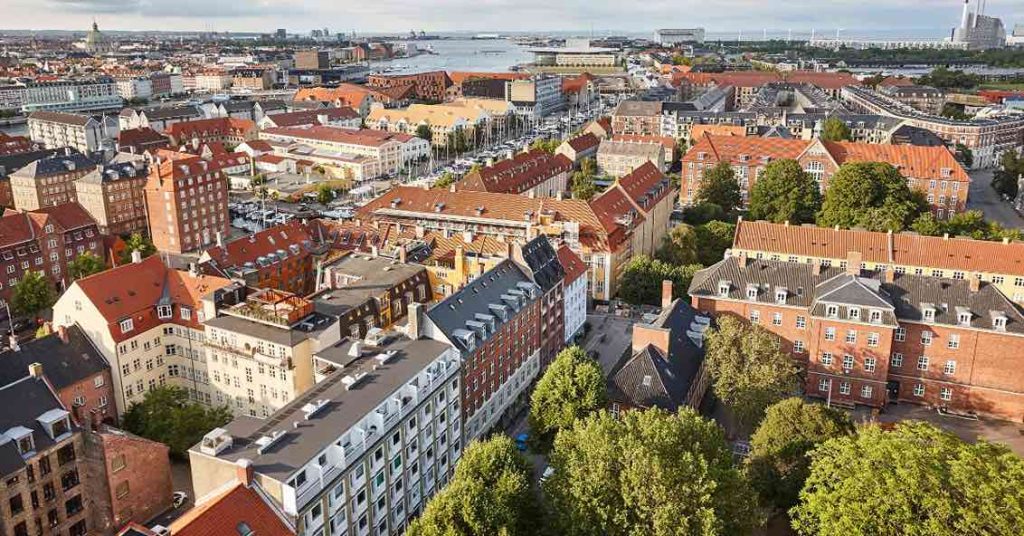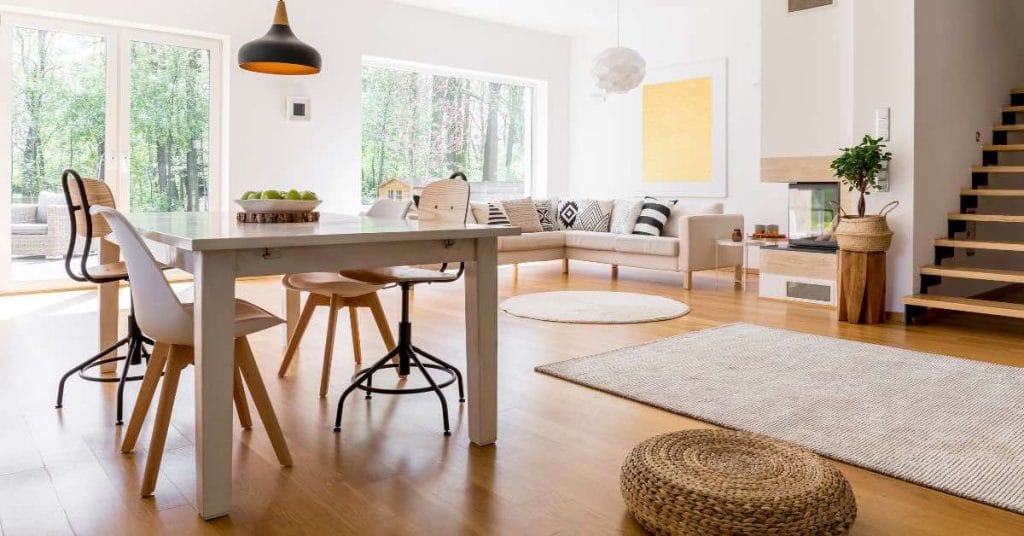Finding a place to live in Denmark can feel like a challenge, especially if you’re new to the country and don’t yet know how the local rental market works. High demand in the bigger cities, strict rental regulations, and cultural norms that might be very different from what you’re used to all play a role in shaping the experience. Renting in Denmark is anything but easy, even for locals. And this is why we have put together this guide.
Whether you’re moving to Denmark for work, study, or personal reasons, understanding how renting works in Denmark will save you time, money, and stress. From knowing the types of housing available to learning what’s written between the lines of a rental contract, a little preparation goes a long way.
Thus, this guide will walk you through the essentials of renting in Denmark as a foreigner; from average rent prices to tenant rights and responsibilities, avoiding scams, and navigating the move-in process. Along the way, we’ll share practical tips to help you get settled more quickly.
Here are the key points we cover in this article:
- Understanding Rental Types in Denmark: Different rental arrangements such as private rentals, cooperative housing, social housing, sublets, and shared flats each have unique rules, costs, and availability, which are crucial for focusing your search and managing expectations.
- Challenges and Market Conditions for Renters: High demand, especially in larger cities with fierce competition and seasonality effects, make finding rental housing in Denmark challenging, particularly for foreigners during peak moving months.
- Overview of Rental Property Prices: Rent prices vary by city and type of accommodation, with Copenhagen being the most expensive; understanding average costs helps set realistic budgets for renting in Denmark.
- Key Elements of Danish Rental Contracts and Costs: Rental agreements in Denmark include details like rent, deposit, notice periods, and maintenance responsibilities; upfront costs can be significant, including a deposit and prepaid rent up to six months’ rent.
- Legal Protections and Practical Tips for Renters in Denmark: Denmark offers strong tenant protections under national law, but foreigners should carefully understand rental laws, document property conditions with photos, and act quickly in competitive markets to secure housing.
If you’re looking for specific advice on things like the best property rental sites, short-term rental options, or student housing, we also have separate guides that dive into those topics in more detail.
What To Know About Renting in Denmark on Beforehand
Before you start searching for a home in Denmark, it’s helpful to understand the different types of rental arrangements you might come across. Each comes with its own rules, costs, and availability, so knowing what’s what can help you focus your search and avoid surprises.
| Type of Rental | Danish Term | Description | Typical Pros | Typical Cons |
|---|---|---|---|---|
| Private rental | Privat leje | Owned by an individual or company and rented out privately. | More availability in larger cities; flexible terms. | Higher prices, especially in high-demand areas. |
| Cooperative housing | Andelsbolig | You buy a share in a housing association, which gives you the right to live there. Technically not a pure rental, but sometimes sublet options exist. | Lower monthly costs than market rent. | Often long waiting lists; sublets may have restrictions. |
| Social housing | Almene boliger | Managed by housing associations, with rent set according to cost price. | Affordable and regulated rent. | Waiting lists of several years, priority given to certain groups. |
| Sublet | Fremleje | Renting from a current tenant for a set period. | Flexible, often furnished, shorter contracts possible. | Limited stability; higher chance of scams if not careful. |
| Room in shared flat | Værelse | Renting a bedroom with access to shared facilities. | Lower cost, easier to find than full apartments. | Less privacy; need compatibility with flatmates. |
| Provided by your employer as part of your job package. | Convenient, often ready to move in. |
In larger cities like Copenhagen, Aarhus, and Odense, demand for rentals often exceeds supply — especially for affordable, centrally located apartments. This means competition is fierce, and it’s not uncommon for a landlord to receive dozens of applications for a single property.
Seasonality also plays a role. The market can be particularly tough in late summer (August–September) when thousands of students move to university towns. If you’re flexible with timing, searching in the winter months may give you more options and slightly less competition.
Another important difference for foreigners is that many Danish rentals are unfurnished — sometimes even without basic fixtures like light fittings or kitchen appliances — so factor setup costs into your budget. Furnished apartments are more common in short-term lets and sublets, which often cater to newcomers, but they usually come at a higher monthly rent.
What to Expect in Terms of the Prices of Renting in Denmark
Prices for renting in Denmark varies widely depending on the city, the type of accommodation, and how close you are to the city centre. Copenhagen and Aarhus have the highest prices when it comes to renting in Denmark, while smaller cities and rural areas are much more affordable.
Average monthly rent for a 1–2 bedroom apartment (2025 estimates):
| City | Average Monthly Rent (1–2 bedrooms) | Price per m² | Notes |
|---|---|---|---|
| Copenhagen | 9,500–14,000 DKK | 175–250 DKK | Central locations much higher; unfurnished common. |
| Aarhus | 8,000–11,500 DKK | 150–210 DKK | Prices lower in outer districts. |
| Odense | 6,500–9,000 DKK | 130–180 DKK | More availability than larger cities. |
| Aalborg | 6,000–8,500 DKK | 120–160 DKK | Good value compared to bigger cities. |
| Smaller towns | 4,500–7,000 DKK | 90–140 DKK | Lower demand, more space for money. |
When that’s said, there are of course some additional costs related to renting in Denmark to keep in mind. These are:
Maintenance fees (fællesudgifter): In some cases, tenants contribute to shared building costs.
Utilities (forbrug): Heating, water, and electricity are often billed separately (1,000–2,500 DKK/month for a small apartment).
Internet: Around 200–350 DKK/month.
Rental Contracts in Denmark
Once you’ve found a place, you’ll be asked to sign a rental contract (lejekontrakt). This is a legally binding agreement, so it’s a good idea to read it carefully before signing — and don’t be afraid to ask questions or request a translated copy if needed.
A standard Danish rental contract typically includes:
- Names & details of both tenant and landlord.
- Address & property description.
- Monthly rent and what’s included (e.g., utilities, parking).
- Deposit & prepaid rent amounts.
- Start date and (if applicable) end date for the tenancy.
- Notice period for termination by either party.
- Maintenance responsibilities (who handles repairs, painting, etc.).
Fixed-term vs open-ended leases:
- Fixed-term contracts end automatically on a set date. Early termination can be difficult unless agreed in writing.
- Open-ended contracts continue indefinitely until one party gives notice (usually 3 months for tenants).
In Denmark, landlords must follow national tenancy laws (Lejeloven). However, the rules can differ slightly depending on whether the property is subject to rent control (omkostningsbestemt husleje) or market rent (fri lejefastsættelse). This is especially relevant in older buildings in major cities.
Deposits & Prepaid Rent to be Aware of

It’s standard practice in Denmark for landlords to require both a security deposit and prepaid rent before you move in.
The legal limits are:
- Deposit: Up to 3 months’ rent. Used to cover any damage or unpaid bills when you move out.
- Prepaid rent: Up to 3 months’ rent. This covers your final months in the property after giving notice.
Example:
If your monthly rent is 10,000 DKK, you could be asked to pay:
- Deposit: 30,000 DKK
- Prepaid rent: 30,000 DKK
- First month’s rent: 10,000 DKK
Total upfront cost: 70,000 DKK
When you move out:
- The landlord will inspect the property and deduct repair costs from your deposit if necessary.
- Normal wear and tear (like minor wall marks) is not supposed to be charged, but repainting and deep cleaning often are.
- It can take up to 1–3 months to get your deposit back, so budget accordingly.
Tip: Always take dated photos of the property when you move in and when you move out. This is your best protection in case of disputes.
Understand the Numbers Behind Renting in Denmark

Having reliable data about the rental market can help you make informed decisions and set realistic expectations. Below are key statistics and findings relevant to foreigners navigating the Danish housing market in 2025, citing trusted sources.
Rental Market Overview
According to Statistics Denmark, about 38% of Danish households live in rented accommodation, with the proportion rising to nearly 50% in Copenhagen. This highlights the high demand and competitive nature of the rental market in major cities.
The rental sector is broadly divided into two main categories: public/social housing and the private rental market. Public housing accounts for roughly 20% of all rentals and features regulated, cost-based rent levels. The private rental market, which forms the majority, has rents set largely by market demand, resulting in higher prices in sought-after areas.
Foreigners in the Danish Rental Market
A report from the Danish Tenant Association (Lejernes LO) indicates that foreign nationals make up around 15–20% of tenants in major cities such as Copenhagen and Aarhus. However, the report also finds that non-EU foreigners face greater difficulties in securing stable rental contracts, often encountering shorter lease terms and higher upfront deposit requirements.
Waiting Times & Competition
According to housing studies summarized by Housing Denmark’s Annual Report 2024, the average waiting time for social housing can be between 3 and 7 years, particularly for foreigners who may not qualify for priority status.
In the private rental sector, listings in Copenhagen often attract more than 50 applications during peak months, reflecting fierce competition.
Rental Price Trends
Data from Statistics Denmark shows that rental prices in Copenhagen have increased by an average of 4.5% per year over the last three years, with smaller cities like Odense and Aalborg seeing more modest increases of around 2–3% annually. The report notes that the average rent for new leases in Copenhagen is now approximately 2.5 times the national average salary for renters, underscoring ongoing affordability challenges.
Tenant Satisfaction & Legal Protections
A survey by Lejernes LO reveals that over 70% of renters feel adequately informed about their rights after consulting tenant organizations or housing advisors. However, newcomers to Denmark often report confusion regarding rental contracts and the handling of deposits.
Denmark’s tenancy laws, according to Housing Denmark, are among the most tenant-friendly in Europe, providing strong protections against unfair rent increases and evictions. Still, effectively navigating these protections requires understanding local procedures and regulations.
FAQ About Renting in Denmark
Is it hard to find a rental in Denmark as a foreigner?
Yes, especially in major cities like Copenhagen and Aarhus. According to Housing Denmark, rental listings can receive over 50 applications in peak months. Being prepared with all your documents and acting quickly can improve your chances.
How much should I expect to pay upfront before moving in?
Landlords can legally ask for up to 3 months’ rent as a deposit plus 3 months’ prepaid rent. With the first month’s rent, this can mean paying the equivalent of up to 7 months’ rent before you get the keys.
Are most Danish rentals furnished or unfurnished?
Most long-term rentals are unfurnished, and may not include light fixtures or appliances. Furnished rentals are more common in short-term leases or sublets, but they usually cost more.
Can I rent without a CPR number?
It is possible, especially for short-term rentals or sublets, but many landlords require a CPR number for contracts, utility setup, and official registration. Without one, your housing options may be more limited.
How long is the notice period to end a rental contract?
For open-ended leases, tenants usually need to give 3 months’ notice. Fixed-term contracts end automatically, but leaving early may be difficult unless the landlord agrees.
Are there rent controls in Denmark?
Yes, but only for certain types of housing — mostly older buildings in regulated areas. The rules can be complex, so it’s worth contacting the Danish Tenant Association (Lejernes LO) for advice.
Can foreigners apply for social housing?
Yes, but waiting lists are long — typically 3–7 years according to Housing Denmark’s 2024 report. Priority is often given to long-term residents or people in specific situations.
Who pays for repairs and maintenance?
Landlords are responsible for major repairs, while tenants usually handle small maintenance tasks like replacing lightbulbs. However, some contracts shift more responsibility to tenants, so check before signing.



